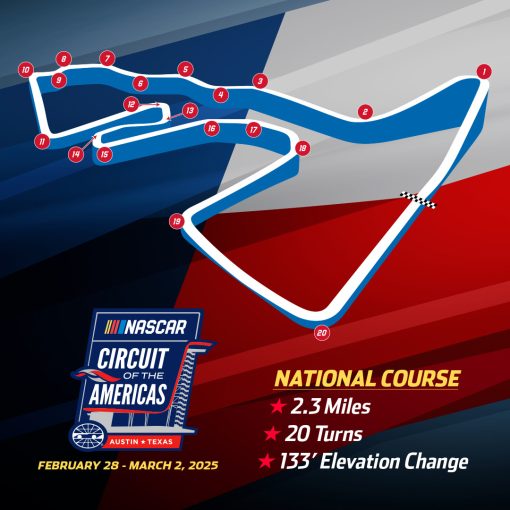America's Truck Bloat: Finding A Realistic Solution

Table of Contents
The Causes of America's Truck Bloat
Several interconnected factors contribute to the ever-increasing size of trucks on American roads.
Consumer Demand for Larger Vehicles
- Marketing Influence: Aggressive marketing campaigns often portray larger trucks as symbols of status, power, and rugged masculinity. This carefully cultivated image influences consumer perceptions and drives demand.
- Perceived Safety and Status: Many consumers believe that larger trucks offer enhanced safety, providing a sense of security on the road. This perception, while not always accurate, contributes to the popularity of larger models.
- Towing Capacity Needs: The need to tow larger boats, RVs, or trailers is a legitimate factor for some consumers, pushing them toward trucks with greater towing capabilities, which often means larger vehicle size.
The role of advertising in shaping consumer desires cannot be overstated. The industry cleverly utilizes aspirational imagery, associating truck ownership with adventure, freedom, and a sense of belonging. This carefully crafted narrative successfully steers consumers towards larger, often less fuel-efficient vehicles.
Lack of Regulation and Enforcement
- Weak Fuel Efficiency Standards for Larger Trucks: Current fuel efficiency standards for larger trucks are often criticized as being inadequate, failing to incentivize manufacturers to produce more fuel-efficient models.
- Insufficient Enforcement of Size Restrictions: While some size restrictions exist, enforcement varies significantly across states and localities, leaving ample room for oversized trucks to navigate roadways designed for smaller vehicles.
The regulatory landscape surrounding truck size and fuel efficiency is fragmented and often lacks the teeth needed to effectively curb the trend of ever-larger vehicles. Stronger, nationwide standards, coupled with consistent enforcement, are crucial.
Infrastructure Limitations and Adaptability
- Roads and Bridges Designed for Smaller Vehicles: Much of America's existing road and bridge infrastructure was designed decades ago, with limited consideration for the current size and weight of trucks.
- Parking Challenges in Urban Areas: Larger trucks present significant parking challenges in densely populated urban areas, further exacerbating existing congestion problems.
The strain on our infrastructure is undeniable. Larger trucks contribute to increased wear and tear on roads and bridges, necessitating more frequent and costly repairs. Parking limitations in cities also become increasingly problematic as trucks grow larger.
The Consequences of America's Truck Bloat
The consequences of America's truck bloat extend beyond simply larger vehicles on the road; they encompass significant environmental, safety, and economic ramifications.
Environmental Impact
- Increased Fuel Consumption: Larger trucks inherently consume more fuel, leading to increased greenhouse gas emissions and a larger carbon footprint.
- Higher Carbon Emissions: The increased fuel consumption directly translates to higher carbon emissions, contributing to climate change and air pollution.
- Contribution to Air Pollution: The burning of larger quantities of fossil fuels contributes to air pollution, impacting public health and environmental quality.
The environmental costs associated with America's truck bloat are substantial. The increased carbon emissions and air pollution pose serious threats to both human health and the environment.
Safety Concerns
- Increased Blind Spots: Larger trucks have significantly larger blind spots, making it more difficult for drivers to see pedestrians, cyclists, and smaller vehicles.
- Higher Risk of Accidents: The size and weight of these vehicles make them more likely to cause serious accidents, often resulting in severe injuries or fatalities.
- Vulnerability of Other Road Users: Other road users, such as motorcycles, bicycles, and smaller cars, are particularly vulnerable in collisions with large trucks.
Data consistently shows a correlation between larger truck size and increased accident rates. The inherent safety risks associated with larger vehicles cannot be ignored.
Economic Costs
- Increased Infrastructure Maintenance: The increased wear and tear on roads and bridges caused by larger trucks leads to higher maintenance and repair costs.
- Higher Fuel Costs for Consumers and Businesses: The greater fuel consumption of larger trucks translates to higher fuel costs for both individuals and businesses.
- Impacts on Insurance Premiums: The increased risk of accidents associated with larger trucks may lead to higher insurance premiums for both truck owners and other drivers.
The economic burden of America's truck bloat is substantial, impacting individuals, businesses, and taxpayers alike through higher fuel costs, increased infrastructure maintenance, and insurance premiums.
Potential Solutions to America's Truck Bloat
Addressing America's truck bloat requires a multi-pronged approach involving regulatory changes, technological advancements, infrastructure improvements, and public awareness campaigns.
Strengthening Fuel Efficiency Standards
- Implementing stricter regulations: Governments must implement stricter fuel efficiency standards for larger trucks, incentivizing manufacturers to produce more fuel-efficient models.
- Incentivizing fuel-efficient truck designs: Financial incentives and tax breaks can encourage the development and adoption of innovative, fuel-efficient truck designs.
- Promoting alternative fuels: Investing in research and development of alternative fuels, such as hydrogen or electricity, can contribute to reducing reliance on fossil fuels.
Raising fuel efficiency standards is a crucial step towards curbing the environmental impact of larger trucks.
Promoting Alternative Transportation
- Investing in public transportation: Significant investment in public transportation systems, including buses, trains, and light rail, can reduce reliance on personal vehicles.
- Encouraging the use of smaller vehicles: Promoting the use of smaller, more fuel-efficient cars and trucks can help alleviate the strain on infrastructure and reduce fuel consumption.
- Promoting cycling and walking infrastructure: Investing in safe and accessible cycling and walking infrastructure can provide alternative transportation options for shorter trips.
Diversifying transportation options is essential to reduce reliance on large trucks for all types of travel.
Improving Infrastructure
- Investing in road and bridge upgrades: Significant investment in upgrading existing roads and bridges to accommodate the weight and size of larger trucks is crucial.
- Creating designated truck routes: Designating specific truck routes can help minimize the impact of larger trucks on residential areas and improve traffic flow.
- Improving parking facilities: Constructing more and larger parking facilities specifically designed for larger trucks can alleviate parking challenges in urban areas.
Upgrading and adapting infrastructure is necessary to accommodate the existing and future truck sizes safely and efficiently.
Enhancing Public Awareness Campaigns
- Educating consumers about the environmental and safety implications of oversized trucks: Public awareness campaigns should educate consumers about the environmental impact and safety risks associated with larger vehicles.
- Promoting responsible driving behaviors: Promoting responsible driving behaviors, such as maintaining a safe following distance and being aware of blind spots, can help mitigate the risks associated with large trucks.
By educating consumers, we can influence purchasing decisions and encourage a shift towards more sustainable transportation choices.
Conclusion: Addressing America's Truck Bloat for a Sustainable Future
America's truck bloat is a multifaceted problem with significant environmental, safety, and economic consequences. The causes are rooted in consumer demand, weak regulations, and infrastructure limitations. However, by implementing stricter fuel efficiency standards, promoting alternative transportation options, improving infrastructure, and launching targeted public awareness campaigns, we can effectively curb America's truck bloat and move towards a more sustainable transportation future. We must act decisively to find solutions for America's truck bloat, reducing its impact on our environment, safety, and economy. Let's work together to advocate for stricter regulations, support sustainable transportation initiatives, and make informed choices when purchasing vehicles – all in the effort of mitigating the effects of America's truck bloat and building a greener, safer tomorrow.

Featured Posts
-
 Tyran Alerbyt Abwzby Rhlat Mbashrt Jdydt Ila Kazakhstan
Apr 28, 2025
Tyran Alerbyt Abwzby Rhlat Mbashrt Jdydt Ila Kazakhstan
Apr 28, 2025 -
 Luigi Mangione A Look At His Supporters And Their Priorities
Apr 28, 2025
Luigi Mangione A Look At His Supporters And Their Priorities
Apr 28, 2025 -
 Bubba Wallaces Impact Motivating Austin Youth Before Cota Nascar Event
Apr 28, 2025
Bubba Wallaces Impact Motivating Austin Youth Before Cota Nascar Event
Apr 28, 2025 -
 Understanding Luigi Mangiones Supporters Key Insights
Apr 28, 2025
Understanding Luigi Mangiones Supporters Key Insights
Apr 28, 2025 -
 Market Volatility Professional Selling And Individual Buying Trends
Apr 28, 2025
Market Volatility Professional Selling And Individual Buying Trends
Apr 28, 2025
